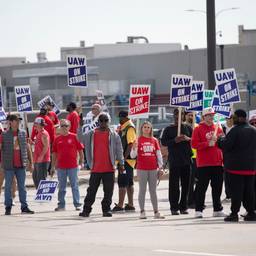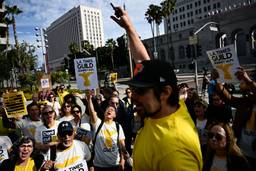The Search for Green Common Ground
A capitalist transition to electric cars pits auto workers, transit riders and frontline communities against each other. What happens when they sit down together?
Emmett Hopkins

The Salton Sea in California is being called the future "Lithium Valley"—a mineral crucial to an electric-vehicle transition but whose mining raises environmental concerns. Photo by David McNew/Getty Images
Last fall, indigenous organizers in northern Chile walked the perimeter of vast salt flats, in a region where multinational mining companies control lithium evaporation ponds and other mineral extraction operations that have been documented to inflict damage against local peoples’ sacred and life-sustaining lands.
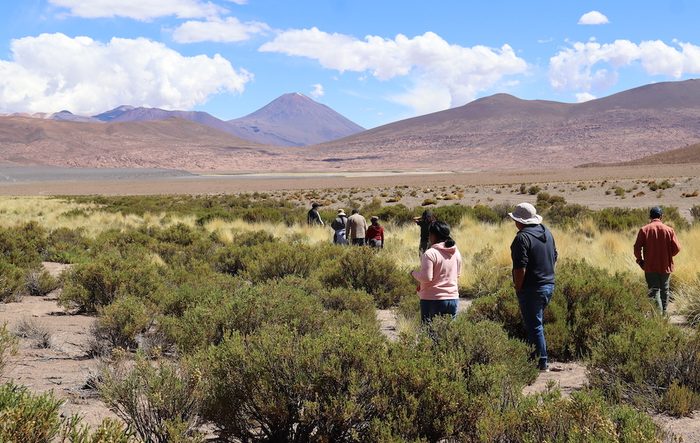
Five thousand miles to the north, auto workers in Michigan prepared to walk off the job at noon to demand, in addition to decent pay and working conditions, the inclusion of workers at the companies’ expanding electric vehicle (EV) and battery operations.
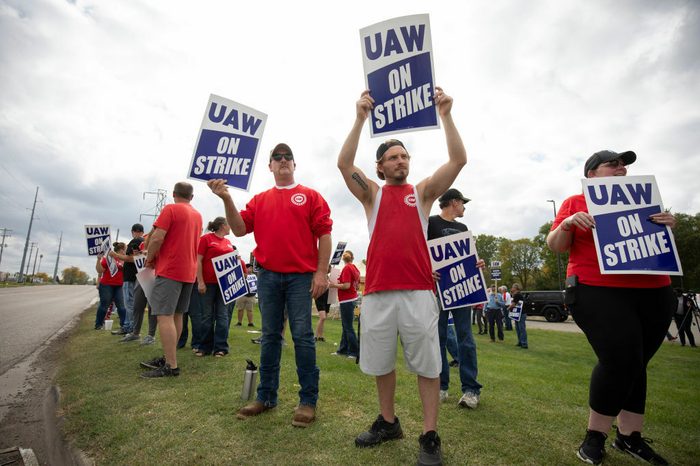
To the east, in Pennsylvania, transit riders with Pittsburghers for Public Transit put the finishing touches on handmade signs to protest proposed service cuts to some of the city’s most popular bus routes.
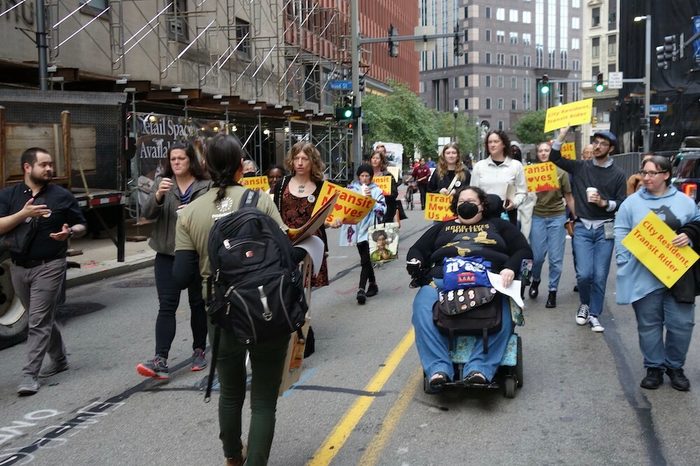
These organizers share a common thread: Their lives and livelihoods are tied up in the process of decarbonizing the U.S. transportation system. They are fighting to win justice for communities at different nodes in the transportation supply chain: from the extraction of materials, to manufacturing and construction, to people who need to get from one place to another. And specifically, they are part of the Energy Transition Mineral (ETM) supply chain, which supplies minerals like lithium for the batteries crucial to a climate transition.
As the world rushes towards decarbonization, it is easy to get lost in a binary way of thinking about the challenges of the climate crisis, framing strictly in terms of success or failure to meet zero emissions targets. But the reality is so much more complicated. The U.S. may choose a path to decarbonization that is slow and stagnant, locking in more suffering and reinforcing the harmful, racist and inefficient status quo. The transportation sector can meet zero emissions, but still fail frontline and working-class communities. The highway-centric, large-vehicle dominated U.S. transportation system can be electrified without adding transit and making streets more people-friendly. The EV transition can be used to turn back the clock on workers’ rights, dignity and safety.
How can we use decarbonization to mend and reimagine old broken systems in ways that unleash a cascade of benefits for everyone? On that same sunny morning last fall, a diverse group of 25 people from different points along the ETM supply chain came together at a table in Washington, D.C. — hosted by the Climate and Community Institute, the progressive climate and economy think tank I work for — to think through a path to just decarbonization.
In the room were members of Indigenous communities resisting an escalation of dirty mineral extraction. There was a United Auto Workers union member fighting for good union jobs at new EV plants. There were transit riders organizing to push for more affordable, reliable transit and safe urban spaces for walking and bicycling. Joining them were pollution reduction advocates, researchers, congressional staff and climate advocates.
This convening – uniting the whole supply chain, end-to-end and in all its nodes, as a potential grassroots coalition – is unprecedented in U.S. politics. Many of these groups had never met before. They came together to learn about each other’s work and think collectively about opportunities to challenge the inevitability of mining, worker exploitation and car dominance.
Over the course of the convening, the group wrestled with some of the tensions inherent to the challenge of decarbonizing quickly and justly. How can auto workers help guide a just transition that moves us away from individual car ownership but continues to meet peoples’ mobility needs? How can decarbonized transportation meet the needs of rural people who rely on big trucks while also honoring the demands of communities in mining regions by reducing the average battery size and vehicle size (and, by extension, reducing lithium mining)? If more batteries are required to meet global climate goals, how can they be created while respecting Indigenous demands for no new mining on sovereign and sacred lands? These questions resist simple answers – and cannot be resolved in a day’s work – but communicating openly and across the whole supply chain, these new partners began a dialogue that could move them toward alignment.
One transit rider and organizer suggested a way to address the tension between mobility needs and Indigenous and mining community demands: Combine car sharing with public transport. A single payment could cover both a rider’s monthly transit pass and the use of a shared vehicle to access places hard to reach by transit, allowing fewer EV batteries to move more people. An integrated shared mobility system could increase transit use and decrease battery mineral demand while giving people full mobility and access to vehicles they need.
In one small-group exercise, a UAWD member, a transit rider and a researcher found a strong point of agreement: The auto manufacturers consistently act against the best interest of the public, as well as their customers and their workers. In the electric transition, the group noted, auto makers try to keep a tiered workforce in new EV plants; they have made EVs difficult to repair, so when a battery reaches end of life drivers are forced to buy another vehicle; and virtually none of the small, efficient vehicles needed to reduce emissions and lithium demand are made in U.S. union shops, leaving consumers with few good options. The auto makers, as a common enemy, present an opportunity to make unified demands.
Thinking about how to create job security for auto workers, a researcher and a UAW member both brainstormed opportunities to think systematically about reusable battery design and the potential to create jobs doing electric vehicle repair and refurbishment in a more circular economy. They imagined that rank-and-file factory workers could even contribute to this design process, as they know better than anyone the challenges and opportunities for making batteries easy and safe to install, remove, repair and replace.
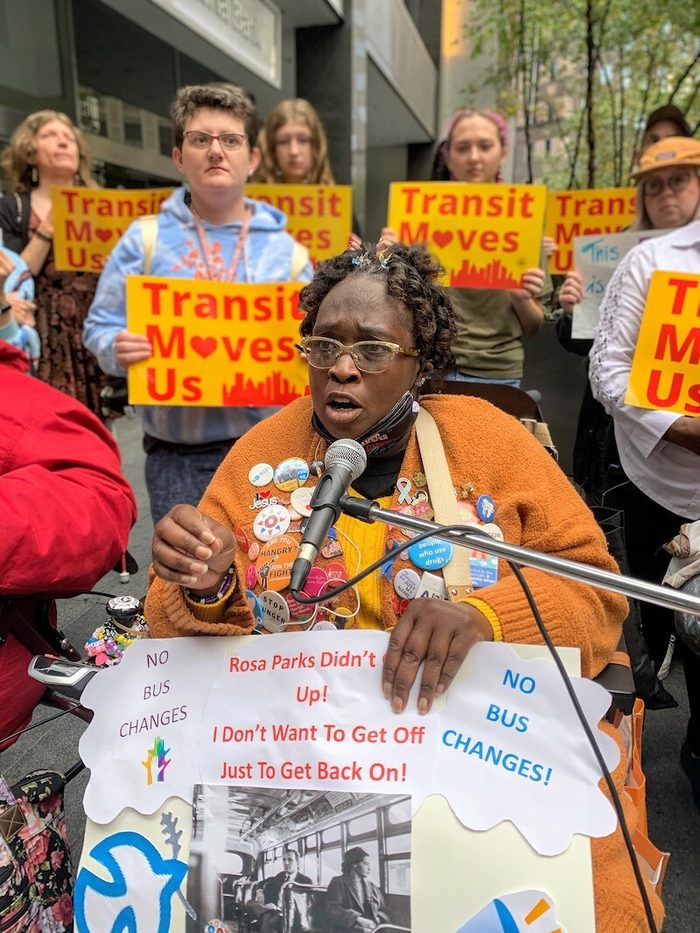
By the end of the day, partners who came in with different baselines of knowledge convened into a community with shared understanding and solidarity. As one participant said at closing, “I leave knowing we have much more in common than I thought we did before.” Another shared “I feel inspired and empowered by how we’re wanting to come together with a new vision.”
The group emerged with an outreach list of constituencies — such as rural people, EV advocates, recycling and reuse operators, and more rank-and-file workers in auto or transit sectors– who were not well represented in the room. They identified points of shared alignment and kindled an enthusiasm for continuing the conversations and building a shared body of work. They created an outline for areas of work that the group could potentially pursue together.
Since the convening, collaborations have begun across several fronts. For example, one participating organization that protects natural resources from extractive industries made an open invitation for the others to join a tour of lithium mining sites in Nevada — ground zero of United States lithium exploration — as a way for workers and organizers at different nodes of the supply chain to see firsthand the environmental and community impacts of ETM mining. In May 2024, a small group of partners conducted a trial run of this tour. During this trip, an auto worker who builds electric Hummers at a General Motors factory in Michigan joined a visit to a lithium mine site in Nevada where GM is the largest investor, and where the mining company has steamrolled local Indigenous resistance to development of this sacred site. This worker returned to Detroit committed to bringing the message to his colleagues on the factory floor and has written up a six-page report about the Nevada trip to present to the steering committee of Unite All Workers for Democracy, a powerful rank-and-file caucus of the United Auto Workers union. This pilot group plans to repeat the trip with a wider group of organizers representing more nodes on the supply chain.
The gathering represented an early stage of the merging of many movements. We know that corporate and industry demands for more destructive mining, weakened workers’ rights, and defunded transit systems are not necessities, but rather policy choices that stem from viewing top-down green capitalism as the only path for addressing climate change. The U.S. and countries around the world can electrify and diversify transportation options to get to zero carbon faster and more equitably. But building sufficient power to push a policy of climate justice requires collaboration across sectors, movements, and barriers of race and class. One step in this process is to create safe spaces for people to come together to build relationships, explore tensions, and find areas of alignment to push in the same direction. As one of the convening participants said during the closing reflection, “It’s one thing to have the right things on paper. It’s another to have the movement. We’re changing the world by doing this – building power and building a serious alternative.”
Emmett Hopkins (he/him) is the Transportation Policy Manager at the Climate & Community Institute (CCI), where he works with members and partners to advance a new vision for mobility that centers justice across the transportation supply chain. CCI is a progressive climate policy think tank that advances bold ideas to decarbonize the built environment; reorder systems of political power; and deconstruct inequalities of race, gender, nation, and class.

